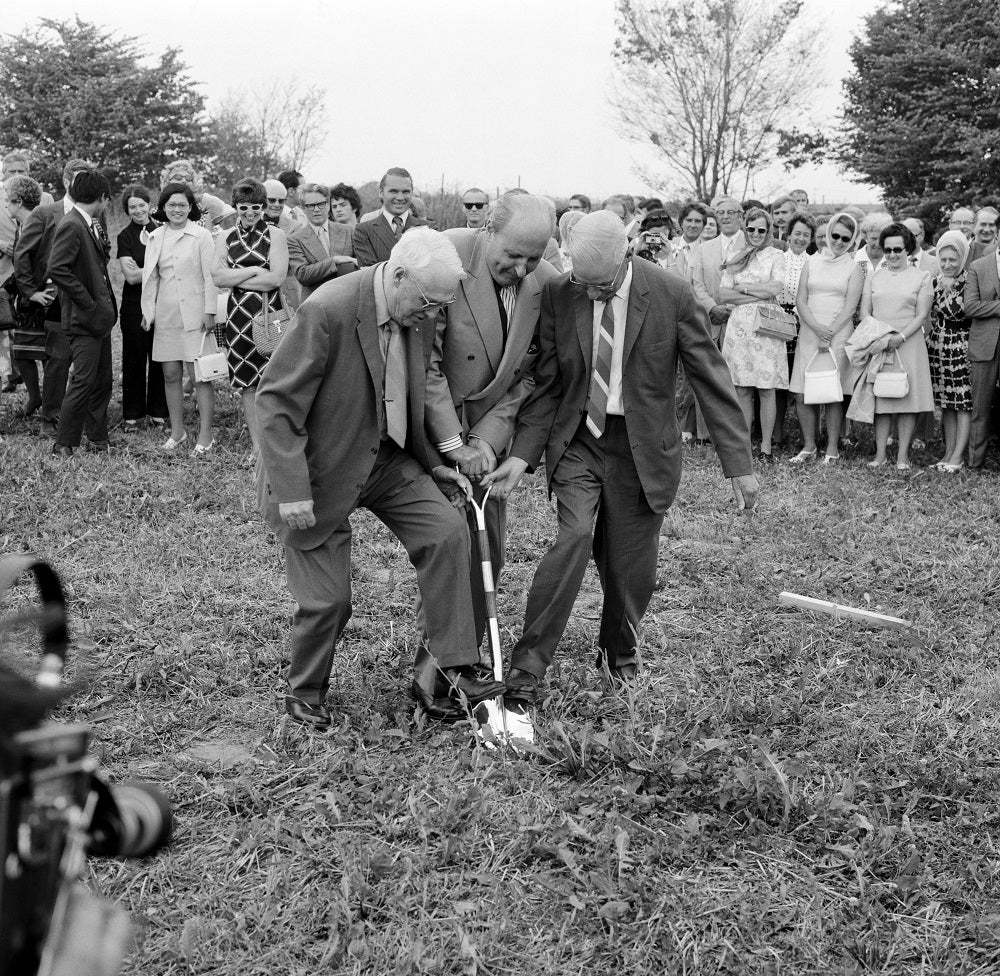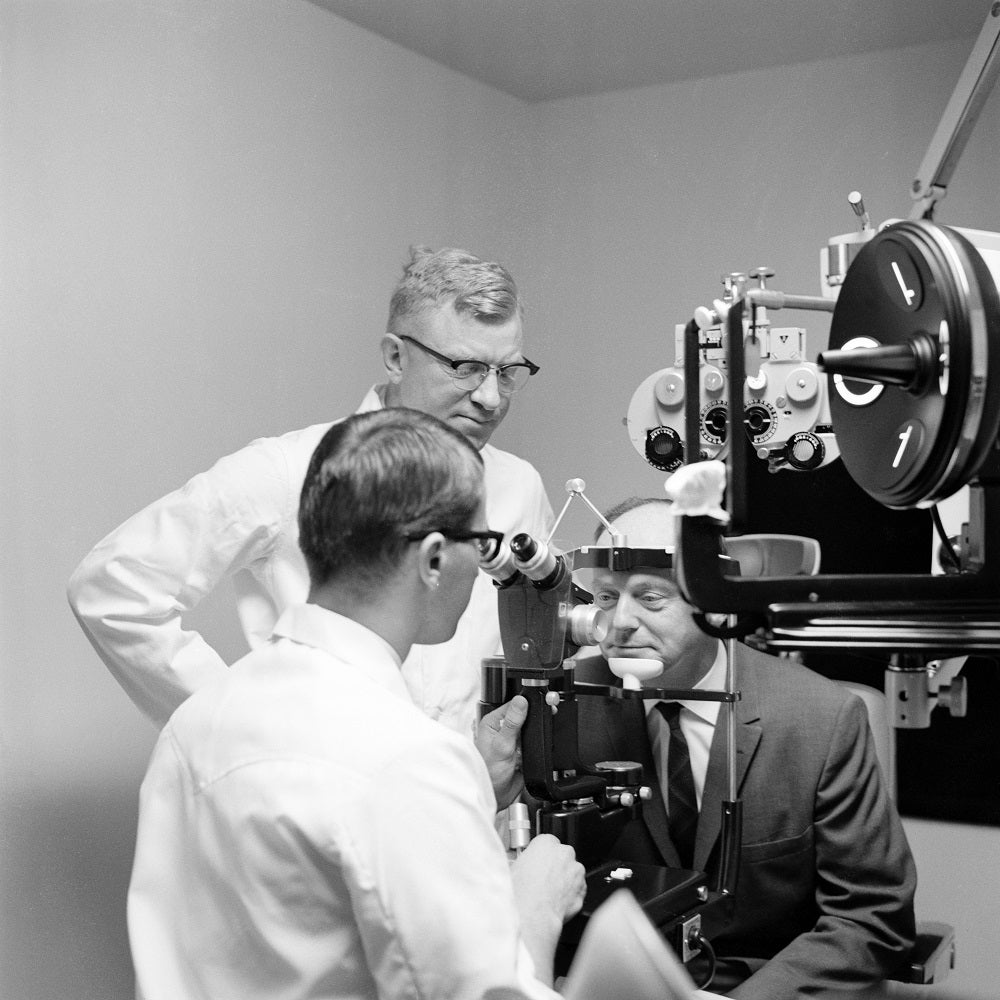In the early sixties, the College of Optometry of Ontario, Canada’s only English speaking Optometry program, was held in only two modest buildings at 138 and 140 St George Street, in the heart of Toronto.The reality was that the St. George Street buildings were bursting at the seams as 4 years of an optometry program within a space measuring only 15,600 square ft. Back then, the full-time faculty only included three; Dean Ted Fisher, Walwyn Long, and Clair Bobier. Later joined by William Lyle, the first of the faculty to have a PhD. Soon the program received the right to provide the Doctor of Optometry degree and so the next step was to seek a location within a university.
We all now know the university and the faculty which adopted Optometry in 1967, the young and ambitious University of Waterloo, which had only begun 10 years previously. It was the scientific discipline of Physiological Optics (now called Vision Science) which then underpinned the optometry curriculum that highlighted the point that Optometry was a profession. The report that resulted in the move of the College of Optometry to the University of Waterloo, titled “Report of the Senate Committee, University of Waterloo on Optometric Education in the University”, recommended that an optometry program be developed at the University of Waterloo in the Faculty of Science. The positive recommendation rested on the recognition that optometry is a “mature and sophisticated discipline based on a recognized body of scientific knowledge and appropriate for study at the university level”. The creation of a program and department in optometry in postgraduate work would provide training and courses for additional university teachers and students in optometry, will increase knowledge of vision problems and care, and will make available a body of resource personnel in matters of vision at UW. In addition, a new optometry clinic can service the university and community.
In the early years in its new home, the School of Optometry was diffusely spread throughout the campus, with offices in the math building, research laboratories in the basement of the Biology building, and the clinic was in the old Waterloo post office, in downtown (uptown) Waterloo. However, it was a step forward from the fraternity house in Toronto.

Groundbreaking of the University's original Optometry building with N.J. Penwarden (Dr. O.), Carl Pollock (Board Chairman), A.W. Cole (Dr. O.) . University of Waterloo Library Special Collections & Archives.
Finally, in 1972 the ground breaking for the original building took place on a knoll on the North Campus. One of the shovels was wielded by the building chairman, Clair Bobier. The original building opened in the winter of 1974. By the time the building was ready, the federal government requested that the original compliment of 50 students per year be increased to 60.
The federal and provincial government funding for the original building is recognized in a plaque outside this audio visual theater. The final line reads that this was a project of “National Significance”. Given that optometry now provides the majority of primary eye care throughout Canada, we think the School has lived up to that vision.
Fast forward now to 1994, under the stewardship of Director Jake Sivak, the research output of the School had increased dramatically in many areas. A consequence was that more research space was needed. Desmond Fonn, the Director of the Contact Lens Research Center, was instrumental in setting up the corporate funding that provided the matching funds required to access the government support available. The stage was set for a return to those overflowing lecture rooms and the need to accommodate a growing number of well qualified Canadian students seeking to study Optometry in Canada. During the early 2000s the Optometry class size was increased from 60 to 90 per year.

Student, Len Koltun, giving the Dean of Science, Peter McBryde, an eye exam in front of Director of the Optometry Clinic, Emerson Woodruff. University of Waterloo Library Special Collections & Archives.
Looking back at the report that started the move of the Optometry College to the University, it is clear that a centre of research has indeed been established. Faculty members in Optometry currently hold twelve Federal Council grants from the Natural Sciences and Engineering Research Council of Canada and from the Canadian Institutes of Health Research. The yearly total in research funds from Provincial, Federal and industry sources amounts to more than 7.2 million dollars. This activity includes two very successful clinical research centers, the Centre for Contact Lens Research and the Centre for Sight Enhancement. The establishment of a Master of Science program in Vision Science, followed by a PhD program in 1980, made the School of Optometry and Vision Science become one of the largest providers of postgraduate research training of vision in the world. A total of 144 MSc and 63 PhD students have completed their degrees and annual enrollments have ranged between 40 and 50 students. In addition to the graduate program in Vision Science, the School of Optometry and Vision Science has provided residency training to 35 optometrists.
Finally, and perhaps most importantly, the establishment of an optometry program at the University of Waterloo has resulted in the development of a clinic that provides an important service, both to the university community and to the local and Ontario community at large. The yearly total in examination encounters for the optometry clinic now stands at almost 26,000 per year in a wide range of areas.
All in all and by any measure it may be said the transition of optometry to Waterloo has been a remarkable success. The year 2017 is a celebratory year for the University of Waterloo in that it is now in its 60th year of existence. It is equally significant to the School of Optometry and Vision Science which celebrates its 50th year as a part of the university.